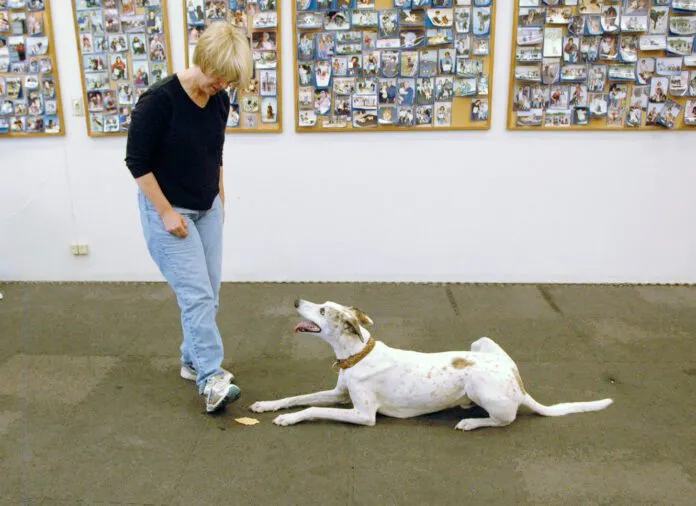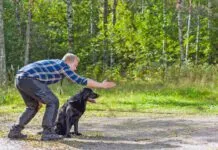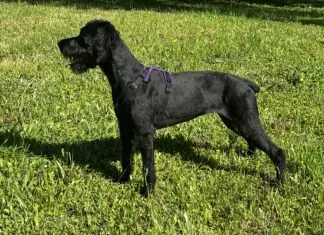
There’s probably not a companion dog on earth who hasn’t coveted or grabbed something he wasn’t supposed to have, or worse, that could harm him, such as a dropped prescription pill or packet of rat poison. Teaching your dog to happily “Leave it” or “Drop it” might not just save that expensive pair of shoes, a beloved keepsake, or your child’s favorite toy, it could also save your dog’s life!
How to Teach “Leave It”
We use “Leave it” when the dog gazes at – or heads toward – something we don’t want him to have or interact with. When your dog is intently eyeing a tempting deer, or the tasty steak that fell on the floor, a well-taught “Leave it!” cue can save the day.
- Start by saying, “Leave It!” cheerfully (remember, it’s a cue, not a command!) as you hold up a treat, then place the treat on the floor, under your foot to protect it. Allow your dog to sniff, lick, and/or nibble at your show as he tries to get the treat.

Start by putting a delicious treat (we used a jerky treat) under your foot (wear sturdy shoes!) and allow your dog to try to get it, by licking or scratching. The moment he moves away or looks at your face instead of the treat, mark the moment with a click or “Yes!” and give him a different treat. Photo by Nancy Kerns - The instant he stops sniffing or licking, or looks away, even if it was by accident (say, he heard a noise in the next room), mark that moment (with the click of a clicker or a verbal marker such as “Yes!”) and give him a treat.
- Keep repeating until turns his head away from the treat or looks at you when he hears the cue, “Leave It!”
- When he’s getting the hang of it, move your foot away from the treat slightly to expose the treat as you use the “Leave it!” cue. When he moves away from the treat, use your marker (click or “Yes!”) and give him a treat multiple times to reward him for staying away from it.
- If he dives for the food, just cover it with your foot again to prevent him from getting it. Mark and treat when he looks away. Do not verbally correct your dog; just wait for the desirable behavior of resisting the food, and mark and reward this with a treat.
Remember to say “Leave It!” just one time as you place the treat on the floor; do not repeat it if your dog goes back for the treat – just cover it with your foot to protect it, wait for him to move away or look away, then mark and treat. Practice until he’ll leave anything alone when you ask him to.
Drop It/Trade

Use “Drop it” or “Trade” after your dog already has something in his mouth that you don’t want him to have. Again, a well-taught cue can save the day. We prefer “Trade” over the more common “Drop it” as it implies a cooperative interaction.
- To start, give your dog a toy that he likes. When he’s happily playing, offer him a treat. As he drops the toy to take the treat, say “Trade,” then mark and feed him the treat.
- Keep feeding treats from one hand while you pick up the toy with the other so he doesn’t race you for it. Toss the toy for him to play with and then “Trade” again.

Say “Trade!” and offer him a tasty treat. If your treat is yummy enough, like Tito, he will likely drop the toy and take the treat. Don’t try to race your dog to get the toy, but continue to feed him treats away from the toy so you can casually pick it up. Then throw it for him and start over. Photo by Nancy Kerns - When he trades easily, use a higher-value item such as a food-stuffed Kong. As long as you have a treat that is very high-value, he’ll want to trade, and is unlikely to try to guard his item. (If he does guard his item and isn’t interested in trading, see “Resource-Guarding in Dogs: What You Need to Know.”) Remember to always give the item back to him promptly, so he doesn’t think “Trade” means he’ll lose his good thing.
- On the rare occasion he has something he shouldn’t, play “Trade” exactly the same way – just don’t give it back afterward.







